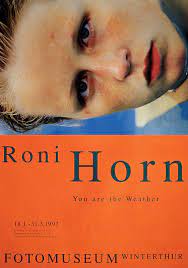Water fascinates us from birth on. One of the fluids to sustain life it is also able to take life, to suck us down and hold us. It is a return to the wilderness of the womb with a vengeance. The healing life sustaining properties of water do not change that it also a wild assassin, alluring to the soul and yet capable of endless betrayal. These are the paradoxical dimensions of water artist Roni Horn captures in her installation of images and words. Another Water. No body of water has embodied the sense of wet threat as has the Thames.
Unlike other dangerous bodies of water in the world its seductive lure begins with the recognition that it is shadowy dark, not the clear of water of baptism, not holy. If it is sacred it is only because we some to this water knowing that to stare deep into its depths is an encounter with the abyss. Our flirtation with the Thames is just this longing of human beings to overcome our fear of the abyss, of death, and openly surrender. Since an abyss be definition evokes the space of the mysterious, a calling forth of the unfathomable. And what is the divine allure of darkness and death if not its promise to return us to an original state of oneness with the elements, with nature.
Writing about the properties of water and darkness combined in This Cold Heaven: Seven Seasons in Greenland Gretel Ehrlich shares this insight: “Early Greek theories held that vision resulted form particles contiunally streaming off the surface of bodies, or that the way was made of water...Darkness rceconciles all time and disparity. It is a kind of rapture in which life is no longer lived brokenly. In it we are seers with no eyes.” The Thames offers a bond without brokenness as we witness the commingling of water and dark. Horn’s images not only document this union they interrogate it, revealing, exposing, and sometimes staging the best of all cover ups by merely staying on the surface refusing the abyss even as she captures its life, the various shapes, moods, and colors that call us to surrender, to give ourselves over to that which cannot be known, but only witnessed, received but never contained.
Keenly, Horn parts the waters so that we may understand better that mystery must be maintained, a world of unknowing that cannot be penetrated cherished if our fragile brokenness is to be borne without continual meaningless conflict and resistance. Humor and a witty eye (the shrewd relentless searching by Horn for the hidden narratives) expose that all those who seek to lose themselves in the watery depths of the Thames only end up bringing themselves out of the shadows into light. Hence the accounts she offers of the seekers who have come to throw themselves into the abyss only to be thrown up, back, forward. She records:
“Disappearnce; thats’s way suicides are attracted to it. It’s also why children fear it...When I imagine the river. It’s something I can enter, something that will surround me, take me away from here”. And yet the Thames repudiates this projection, refusing to be the place in which all can be let go and lost.
Horn offers us an interior glimpse of “Another Water” that beckons us into greater visibility and therefore into the nirvana of being known in our brokenness. Her images embrace the shadow. Compelling us to past the one-dimensional notion of black water as emblematic always and only of death, she offers us opaque darkness that is living water, an abyss of surrender into whose dept the soul can merge and be restored. This is not the still waters of bliss. It a record of turbulent movement, of the soul groping towards the recognition that we must run on as the river runs, accepting that the mystery of death and resurrection will be contained by simplistic projections and explanations. These images call to life “another water” to make the eye remember than in the abyss of surrender we find the soul’s code revealed.

